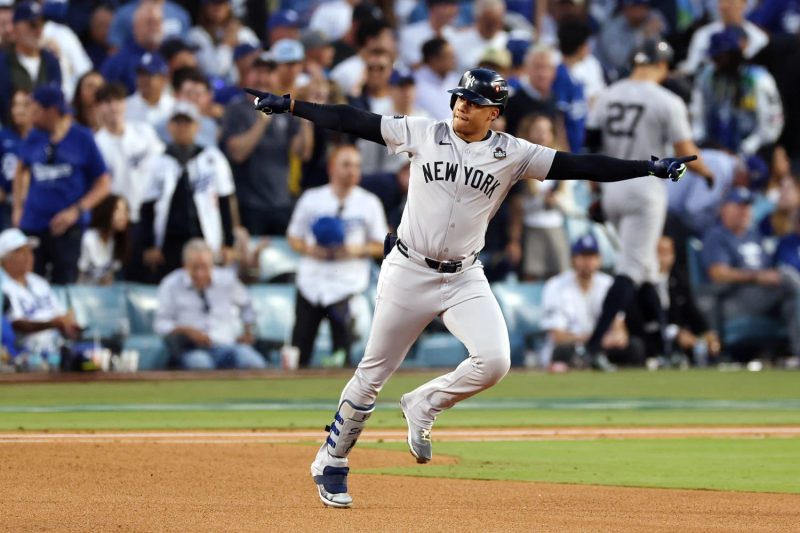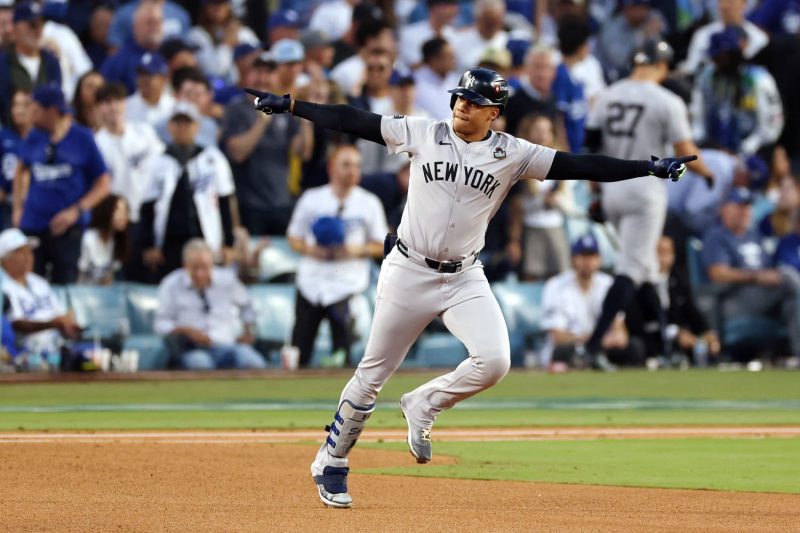
Earlier this year, Steve Cohen laid out his principles as the owner of the New York Mets, saying it was a “philanthropic” endeavor, in an interview with CNBC’s Andrew Ross Sorkin.
“I don’t care about the cost side,” Cohen said, adding: “If I can make millions of people happy, how cool is that? I actually do it as a civic responsibility.”
That attitude helps explain how outfielder Juan Soto ended up agreeing to the richest-ever contract in baseball on Sunday, and among the most lucrative signed by any professional athlete in the world.
The deal for Soto, who’s 26 and from the Dominican Republic, comes to $765 million over 15 years and includes a $75 million signing bonus and has the potential to increase to more than $800 million, according to MLB.com.
What’s especially notable about the contract is that none of the money is “deferred” — meaning it must be paid each year that Soto is on the Mets’ active roster. Besides the dollar amount, the lack of deferrals is what makes Soto’s contract even more eye-popping than the $700 million deal signed just last year by Los Angeles Dodgers star Shohei Ohtani: $680 million of Ohtani’s deal will not be paid until after 2034.
For Soto, it means taking all the money up front.
“It actually makes little sense why (Soto) would get such a big contract without deferrals,” Nathan Goldman, an associate professor of accounting at North Carolina State University, said in an interview with NBC News.
Given the hefty combined personal income tax rates — approximately 15% for the wealthiest residents — levied by the city and state of New York, Soto’s ultimate payout will be somewhat diminished.
Yet Soto retains the potential to earn even more money: According to MLB.com, he can opt out of his contract after his fifth year with the Mets if he believes he can command higher sums on the free market.
However, the Mets can override that opt-out by increasing his annual salary by $4 million a year, from $51 million to $55 million for the final 10 years.
And Soto’s contract does not include the amount the Mets and Cohen will have to pay to satisfy Major League Baseball’s luxury tax. Though ostensibly designed to create a more even playing field between large- and small-market teams, deep-pocketed owners like Cohen have not flinched at paying that penalty to acquire the most coveted players.
The simple answer to unlocking Soto’s contract may simply be Cohen. Despite regularly carrying some of the most expensive contracts in baseball this century — including a $340 million deal signed with shortstop Francisco Lindor in 2022 — the Mets have been thwarted time and time again, including crushing losses in the playoffs and World Series. The team is nearing the 40th anniversary of its last championship. The outlook seemed to change five years ago, when Cohen, a longtime hedge fund manager, purchased the team for $2.4 billion. Cohen has been an unusually accessible owner, meeting with fans on multiple occasions and often weighing in on social media.
More importantly: Cohen, worth as much as $21.3 billion according to Forbes, has been among the most profligate owners in baseball since he took the reins of the team. According to data from Spotrac, a website that monitors sports spending, the Mets have held the largest annual payroll since 2023. A separate index from TheScore.com that tracks payrolls versus teams’ approximate revenues shows Cohen may actually be operating the team at a loss.
Despite the annual ratcheting of payrolls, the winner of the World Series has often been unpredictable. But the baseball gods have been notoriously cruel to the Mets, despite their outsize spending. After crashing out of the first round of the playoffs in 2022 with a roster full of veterans, Cohen blew up the team and traded for prospects while loading up on another set of expensive free agents.
But that team still only tied for second in the National League East Division this year and barely made the playoffs. While they nevertheless made it to the National League Championship Series, they were ultimately bested by the Los Angeles Dodgers, who went on to win the World Series in October.
Yet over time, payroll does seem to equate to winning — belying the infamous “Moneyball” approach to spending efficiently on under-used players.
With Soto’s contract, it seems Cohen will not be denied again. According to reports, the New York Yankees, baseball’s long-running big spenders, offered Soto only $5 million less than the Mets. But despite making the World Series this year, the Bronx Bombers have faced roster turmoil in recent years, while continuing to employ a manager, Aaron Boone, now loathed by many fans.
Ironically, Soto is coming over from the Yankees, where he was traded in December 2023.
Soto is entering his peak years and continues to draw comparisons to the hitting legends Ted Williams and Barry Bonds. That combination of youth and potential helped clinch the salary record.
Another key to Soto ending up with such a massive contract was simply timing. He took advantage of a year lacking in other mega free agents and was able to command a premium on the open market.
It’s possible Soto’s contract will be surpassed in just one year. Analysts say Toronto Blue Jays star Vladimir Guerrero Jr., who finished sixth in MVP voting last season, is expected to command massive numbers when he enters free agency after the 2025 season.
Even if no one ends up reaching or surpassing Soto’s figure, MLB will continue to lead all professional sports in titanic deals for contracts, for one simple reason: Unlike the NFL and NBA, it doesn’t have a salary cap.
According to Michael Ginnitti, Spotrac’s founder and managing editor, “Baseball’s luxury tax system … allows billionaires to spend billions on their team if they choose.”


